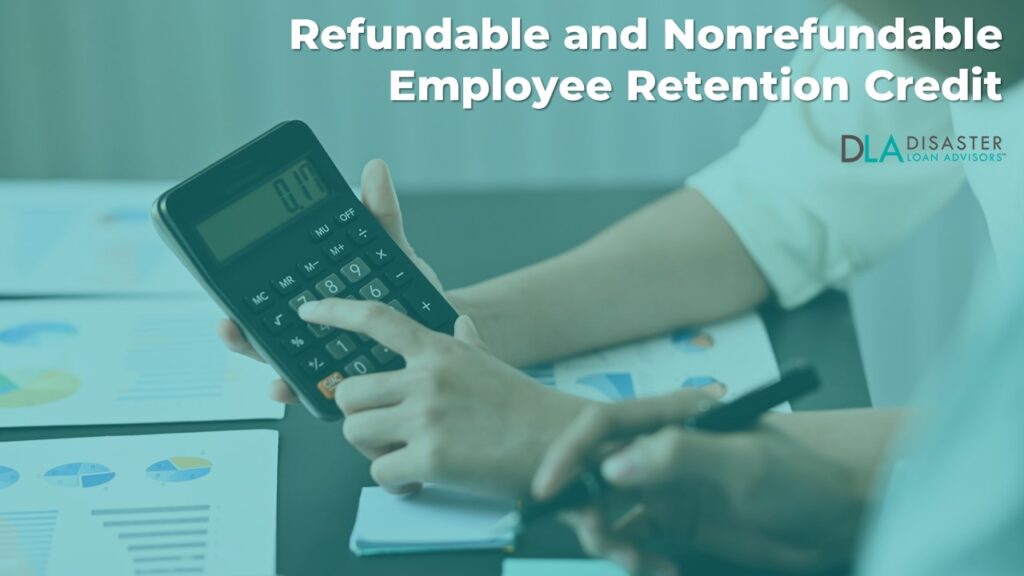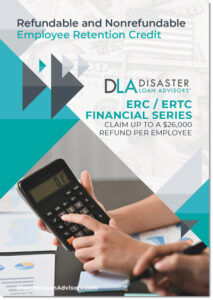
The changing regulations and deadlines of the Employee Retention Credit (ERC) program make interacting with the IRS and the government even more difficult. Due to this, many firms are unsure about their position toward ERC. As a result, many people are unaware that they may apply for ERC in 2022.
A tax credit may significantly lower your tax liability or increase your tax refund. Tax credits might be fully refundable, partially refundable, or neither. This rule can be applied to the ERC based on various conditions and criteria.
Key ERC Credit Takeaways You Will Learn:
- Concept of ERC: Understanding the concept and importance of the Employee Retention Credit.
- Refundable vs. Non-Refundable ERC: Differentiating between refundable and non-refundable Employee Retention Credits.
- Non-Refundable ERC Calculation: Mastering the calculation process for non-refundable Employee Retention Credit.
- Refundable ERC Calculation: Learning how to accurately calculate the refundable portion of Employee Retention Credit.
- Applying for ERC: Gaining insights on how to apply for ERC and claim up to $26,000 refund per employee.
See Important 2024 Employee Retention Tax Credit Deadline Information at the Bottom of This Article.
What is Employee Retention Credit?
The CARES Act enabled the ERC, incentivizing companies to keep workers on the payroll. The 2020 ERC Program is a refundable credit of 50% of up to $10,000 in qualified wages paid and qualified health plan expenses per employee by an eligible company from 3/12/20 through 12/31/20.
Refundable and Non Refundable Portion of Employee Retention Credit
A nonrefundable tax credit’s maximum amount is limited to the taxpayer’s tax liability. On the flip side, taxpayers get their full refundable tax credit. Refunds are given to taxpayers to the extent of refundable tax credits that exceed their tax obligations. Check out more about A Comprehensive Guide on Employee Retention Tax Credit Updates.
Companies are encouraged to keep employees on their payroll through the Employee Retention Credit by getting a wage credit. Businesses affected by COVID-19 are eligible for a refundable credit of 50% or 70% for up to $10,000 in salaries paid each quarter in exchange for keeping their staff. Read full erc for restaurants details here.
Eligible employers who knew how to file for the Employee Retention Credit before the program’s conclusion can use Form 7200, which is this IRS or Internal Revenue Service form to request payment of the credits in advance of the quarter.
The company must maintain the records and paperwork proving each employee’s absence to prove the claim. Additionally, Form 941 Employer’s Quarterly Federal Tax Return must be saved by the employer.
For qualified employers, the refundable tax credit provided by this program are entirely refundable. However, employers have to continue to pay their employees to be eligible.
The employer’s share is the non refundable portion of the social security tax.
Difference Between Refundable and Non Refundable Employee Retention Credit?
Taxpayers reduce their tax liabilities by deducting the refundable tax credit and non-refundable portions. The difference between a refundable credit and the amount of taxes due is paid as a refund. The excess of a nonrefundable credit over taxes owing is discarded.
Non Refundable Portion of Employee Retention Credit: How Do You Calculate It?
If you over reported taxes on earlier Form 941 filings, you might be able to claim the ERC. Form 941-X is used for this.
The nonrefundable ERC part for the first and second quarters of 2021 is 6.4% of the salary. This is equivalent to the Social Security tax paid by the employer.
According to the instructions, the tax preparer must duplicate the value from column 3 into column 4. Enter a positive value in column 3 and a negative number in column 4 to represent the correct sum as a balance due or credit.
The taxpayer won’t receive the full ERC credit if the individual filling out the paperwork neglects to convert the number in column 4 to a negative.
Check out 5 Ways to Calculate the Employee Retention Credit.
How to Calculate the Refundable Portion of Employee Retention Credit?
For each Form 941 that has to be amended, a separate Form 941-X must be filled out. In addition, every page’s corporate information is filled out, and then the return you are updating is noted in the top right corner.
You can use worksheet 1 to calculate the refundable amount of ERC. When filing the amended Form 941 or Form 941-X, the cumulative amount employer’s Social Security tax can be considered refundable. This is because the tax was paid with the original filing of Form 941.
Refundable Vs. Non Refundable Portion of Employee Retention Tax Credit
A nonrefundable credit cannot be utilized to boost your refund or produce a tax refund that did not previously exist. In addition, your refund or savings cannot be more than the taxes owed.
The difference between a refundable credit and the amount of tax owed will be refunded to you. Excess credits that are nonrefundable and exceed the taxes you owe are unrecoverable.
The non refundable portion of an ERC is 6.4% of salaries. This is the Social Security Tax owed by eligible employers.
Conclusion and Summary for Refundable and Nonrefundable Employee Retention Credit
A refundable tax credit equivalent to 50% of the qualified wages an eligible firm pays to employees after March 12, 2020, but before January 1, 2021, is known as the Employee Retention Credit and can be used to offset certain employment taxes.
The non refundable portion of the ERTC was deducted from Social Security taxes in 2020. However, the non-refundable amounts of the ERTC must now be removed from Medicare taxes for salaries earned after June 30, 2021, according to the American Rescue Plan (ARP) Act, which made this modification.
Consult your tax advisor for the best advice on refundable and non refundable portion of ERC.
ERC PDF Download of This News Article
Download a PDF version of Refundable and Nonrefundable Employee Retention Credit
Get Help on How to Apply for the Employee Retention Tax Credit (ERC / ERTC): Claim Up To a $26,000 Refund Per Employee for Your Business
Disaster Loan Advisors can assist your business with the complex and confusing Employee Retention Credit (ERC) and Employee Retention Tax Credit (ERTC) program.
Depending on eligibility, business owners and companies can receive up to $26,000 per employee based on the number of W2 employees you had on the payroll in 2020 and 2021.
The ERC / ERTC Program is a valuable tax credit you can claim. This is money you have already paid to the IRS in payroll taxes for your W2 employees.
Schedule Your Free Employee Retention Credit Consultation to see what amount of employee retention tax credit your company qualifies for.
ERC Deadline Urgency in 2024
April 15, 2024 Deadline for the 2020 ERC Tax Year
The deadline is coming up for the final opportunity to retroactively claim your business Employee Retention Credit for the past 2020 tax year. With the April 15, 2024 deadline fast approaching, we urge you; don’t let this final chance pass!
While not all businesses will qualify, as it depends on multiple factors per IRS Rules and Guidelines, you might be leaving significant financial relief on the table from prior COVID impact to your business during the past 2020 and 2021 business operation years.
Last year, in September 2023, the IRS temporarily paused processing ERC Claims for the remainder of last year. We at Disaster Loan Advisors (DLA) predicted this over one year ago when we made this ERC video warning business owners. See the ten-minute mark of the video for details.
TAKE ACTION NOW IN 2024
Even though the IRS has temporarily paused processing, you will still want to check eligibility and file now (if you qualify) because once the IRS will resume processing, ERC tax credit claims are processed in the order they are received.
If you haven’t previously filed for the ERC Credit, it is worth scheduling a phone call to at least explore your possible eligibility from both the past 2020 and 2021 business tax years. Contact us today for a deep-dive analysis to determine if your business qualifies one or more quarters from the 2020 and / or 2021 tax years.
Cover Image Credit: 123RF.com / Prathanchorruangsak / Disaster Loan Advisors.

